I recently arrived at the Outward Bound basecamp in Big Bend, Texas to embark on a staff expedition. Right from the start, the sun was gleaming. Our crew looked in awe of the mountains that towered around us—the Chisos range in Big Bend National Park and the peaks opposite the river in Mexico. We packed up jugs of drinking water and dry bags with all of our food for a week. Before long, we waded into the swift water above Colorado Canyon. We were ready to officially commence the winter season at the Big Bend base.
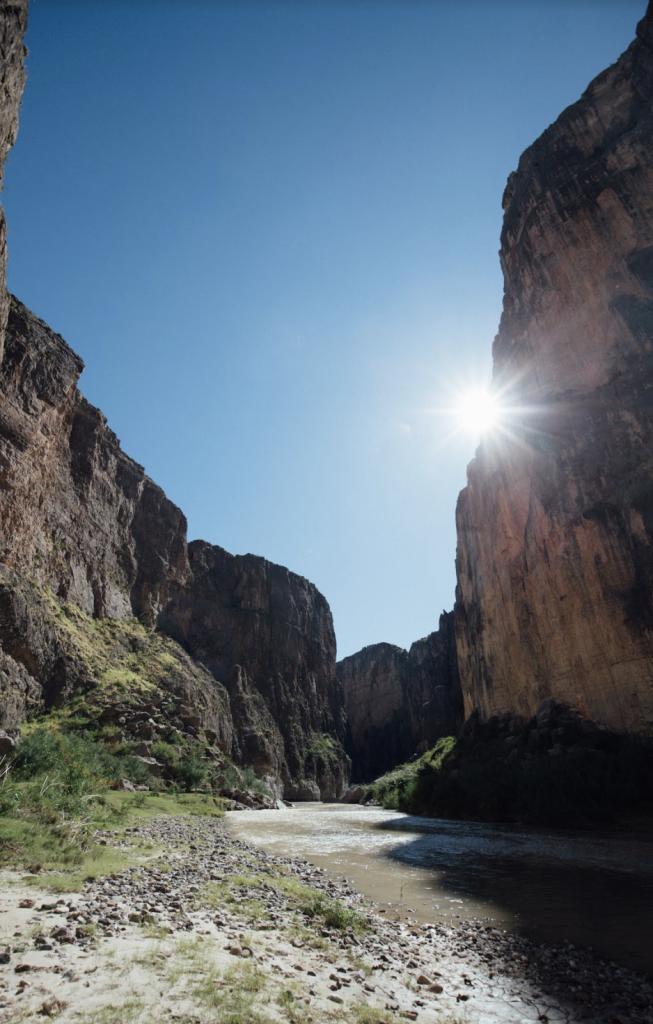
Photo by Rachael Pace
During our first evening together, darkness surrounded our circle as we ate pasta and shared stories with the ripple of tomorrow’s whitewater echoing off the rock wall of the opposite bank. We set up our tarps and sleeping pads under a gleaming sky of stars. We couldn’t help but marvel at the immensity of this place. Big Bend has some of the darkest skies in the contiguous 48 states, and it’s an astronomer’s dream. An Instructor advised us that even on a moonless night, she covers her eyes to sleep because the stars are so dazzlingly bright.
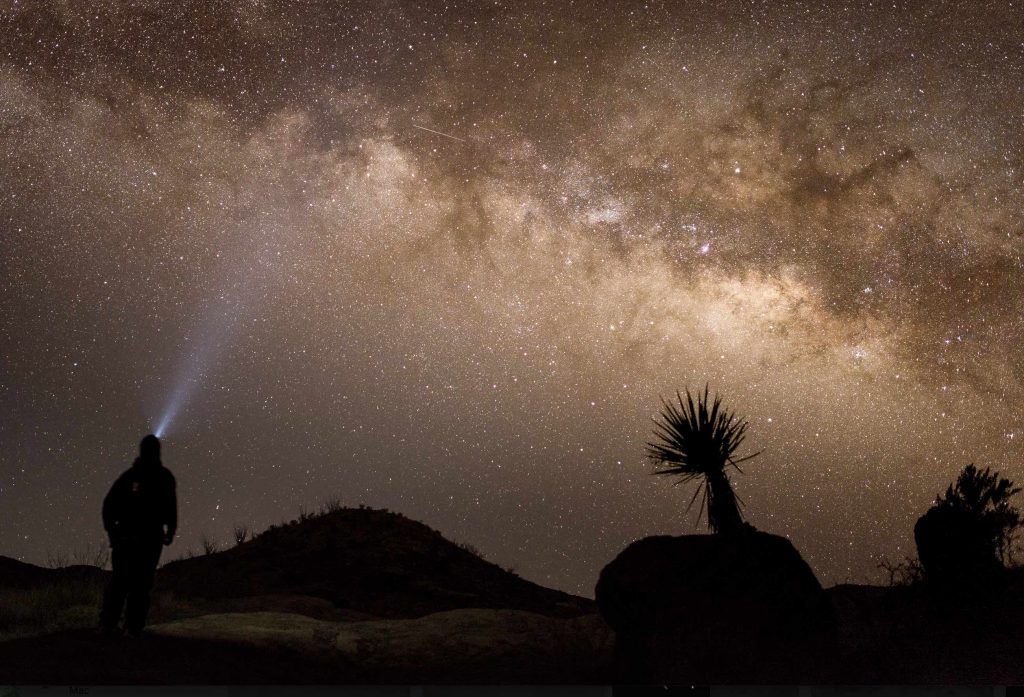
Photo by Calvin Croll
Our voyage downriver through the Colorado and Mariscal canyons to the mouth of the Santa Elena canyon took three days of learning the ways of this ancient water. We hopped out of our canoes to scout rapids, spotted sparrows making mud nests in the cliff walls, tracked the prints of otter and ringtail cat on the muddy banks, and cow and javelina prints in the washes. In the heat of the day, we jumped into the chilly current to swim. In the evening, we gathered around driftwood fires to bake cinnamon buns or brownies. We learned the hours of the night by the rotation of the constellations overhead, and every morning we slipped on our paddling shoes in the dark before sunrise.
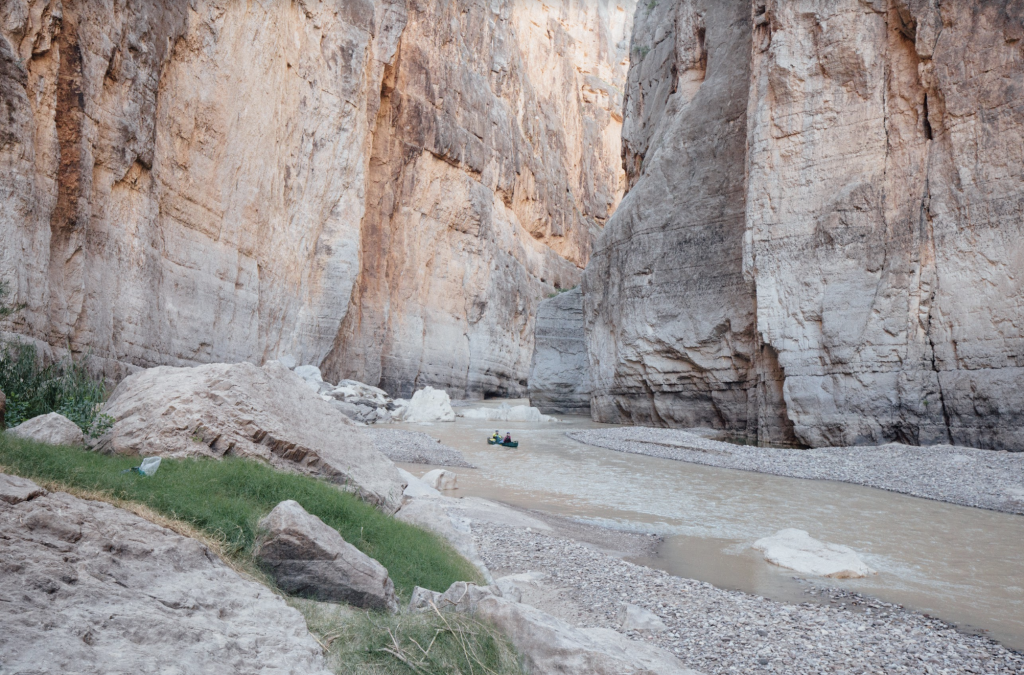
Photo by Rachael Pace
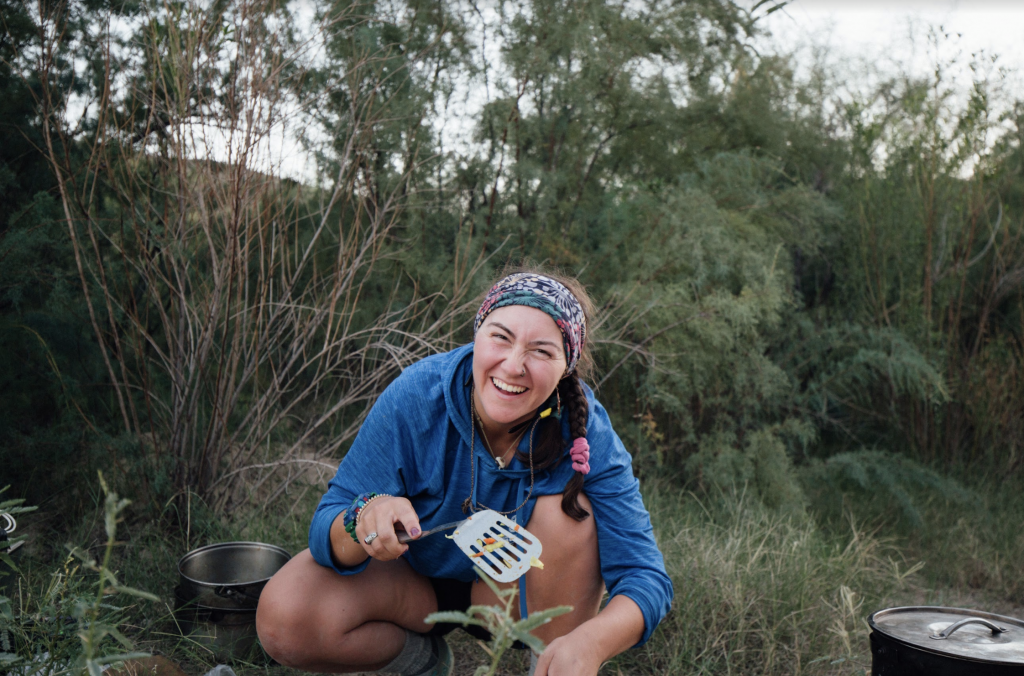
Photo by Rachael Pace
When we arrived at the mouth of the mighty Santa Elena canyon in Big Bend, we had already perfected the art of riding the seam. In the whitewater of a river carving through rock walls, the full power of the current slams into the canyon side or cane-lined banks. Riding the seam is the technique of tender, minute paddling adjustments to direct the canoe into the broiling line between the forward power of the main current and the reverse charge of the eddy. We practiced the art, skill and thrill of positioning ourselves in the seam.
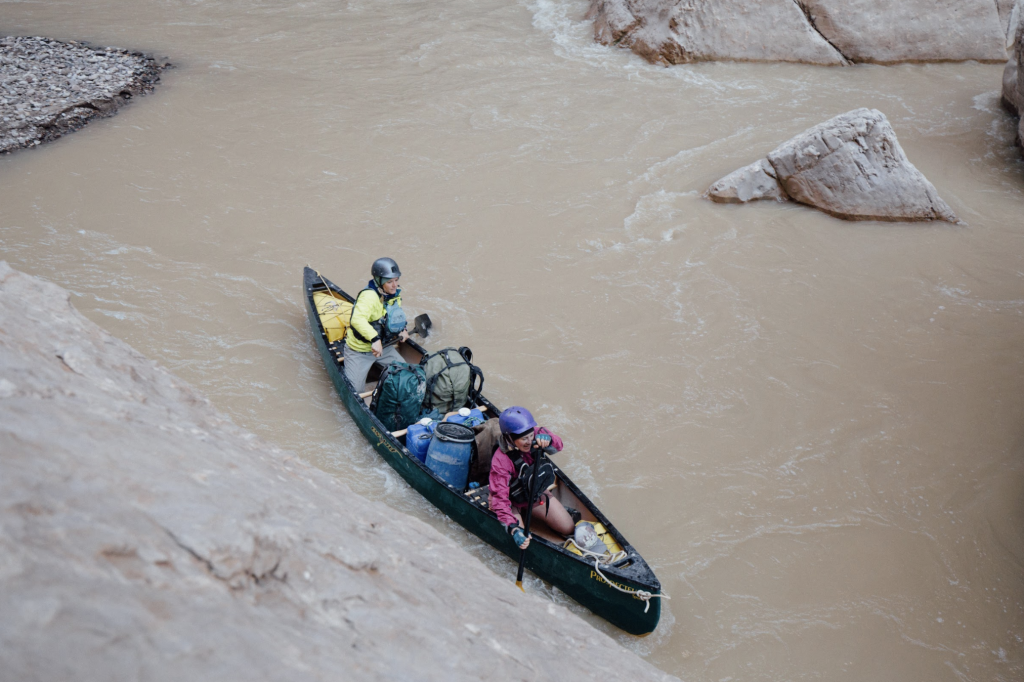
Photo by Rachael Pace
Through the Rio Grande’s outlet in the Gulf of Mexico, the river currently represents the international boundary of the US/Mexico border. Traveling the river is also an act of ‘riding the seam’ in a larger sense. It was humbling and striking to be within this borderland, in a place of contiguity and peace.
It was a week filled with awe at the ancient seafloor land cracked open, with magical slot canyons and swirling currents. We got out of our canoes on river left or river right almost indifferently, in this land where the tributaries of one continuous earth flow into the Rio Grande/Rio Bravo.
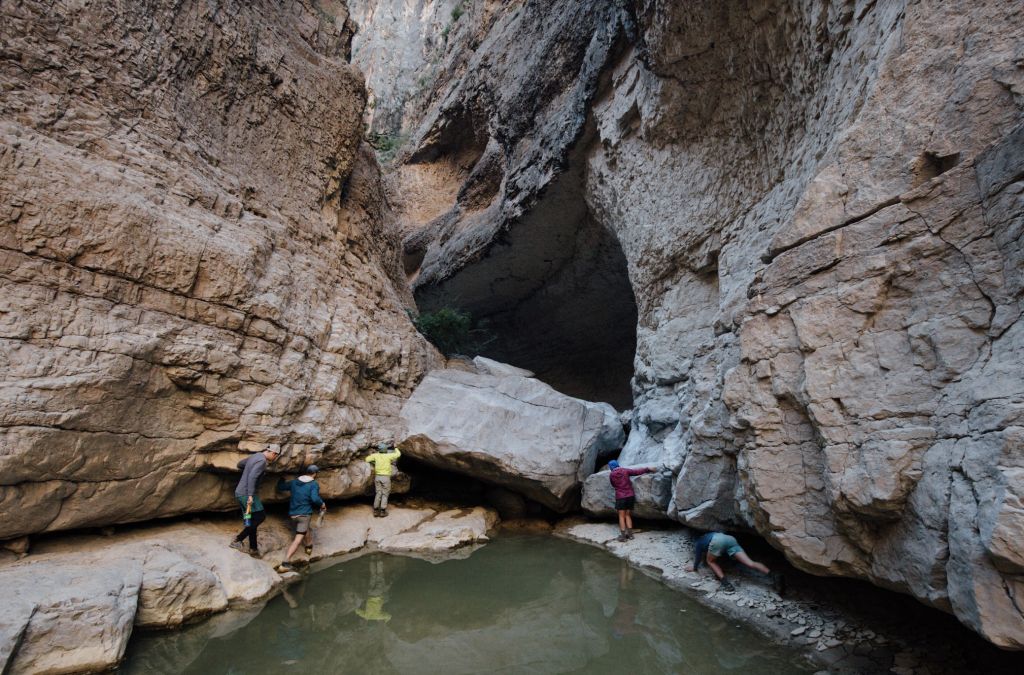
Photo by Rachael Pace
We hiked into the expansive desert around us and up to the top of the mesa, passing fragrant creosote, prickly pear cactus and flowering ocotillo. Bundled in layers, we dropped into the sunless mysteries of Joel’s canyon. Using rope systems, we rappeled by descending on ropes through six drops into the earth itself. We were drops of water, traveling down the water-carved rock. Our group passed through tenajas (pools) of water and lowered backwards off ledges, while climbing creatively through tight squeezes. We emerged from the canyon in the late afternoon with weariness and in amazement, reflecting on the many teachings Big Bend gave us. Someone in our group said it best: Sometimes in life, you just need to let out a little rope and trust what happens.
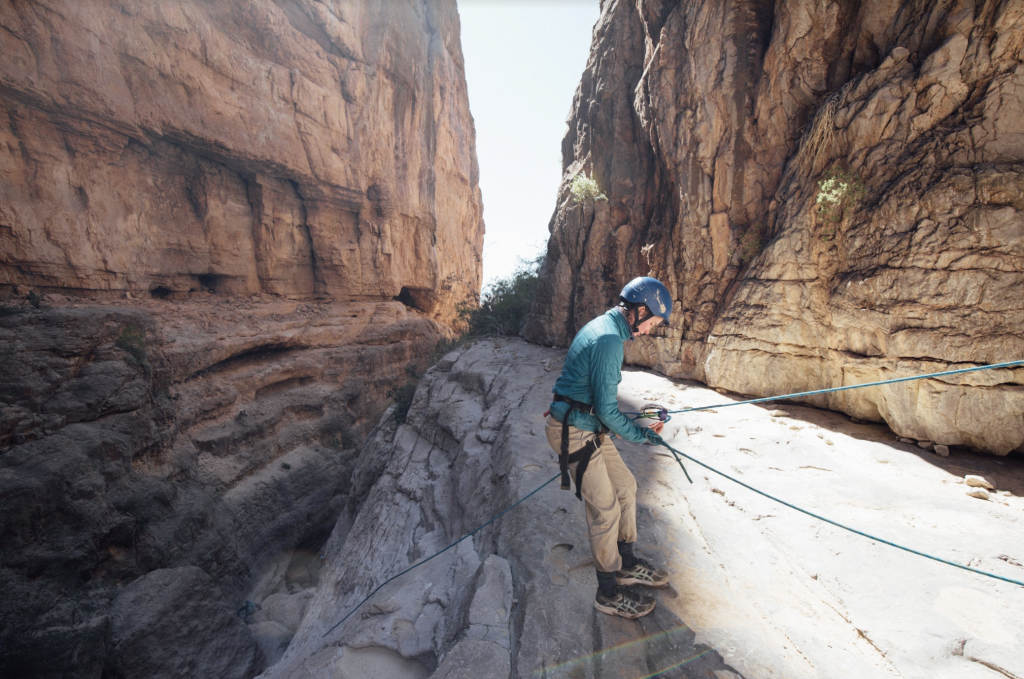
Photo by Rachael Pace
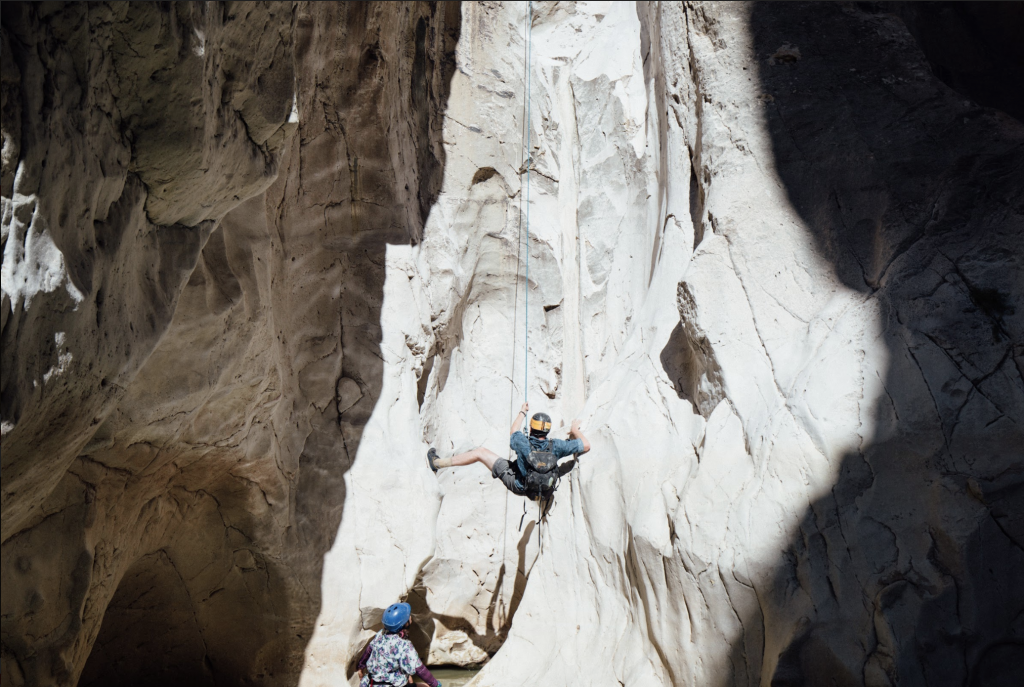
Photo by Rachael Pace
The land that thrusts up into mountains is sedimentary rock composed of ancient marine creatures fossilized in limestone. A combination of the erosive power of the river and tectonic upthrust carved the deep canyons we traversed. The history of the land is literally stacked above, with the oldest fossils down low. The climax of our route was the Rock Slide rapid inside Santa Elena Canyon, a site where an enormous rock slide off the canyon wall created an obstacle course of boulders and rapids within the river. We traversed the banks and carefully made plans with our boat partners, using our accumulated skills from the challenges of the week.
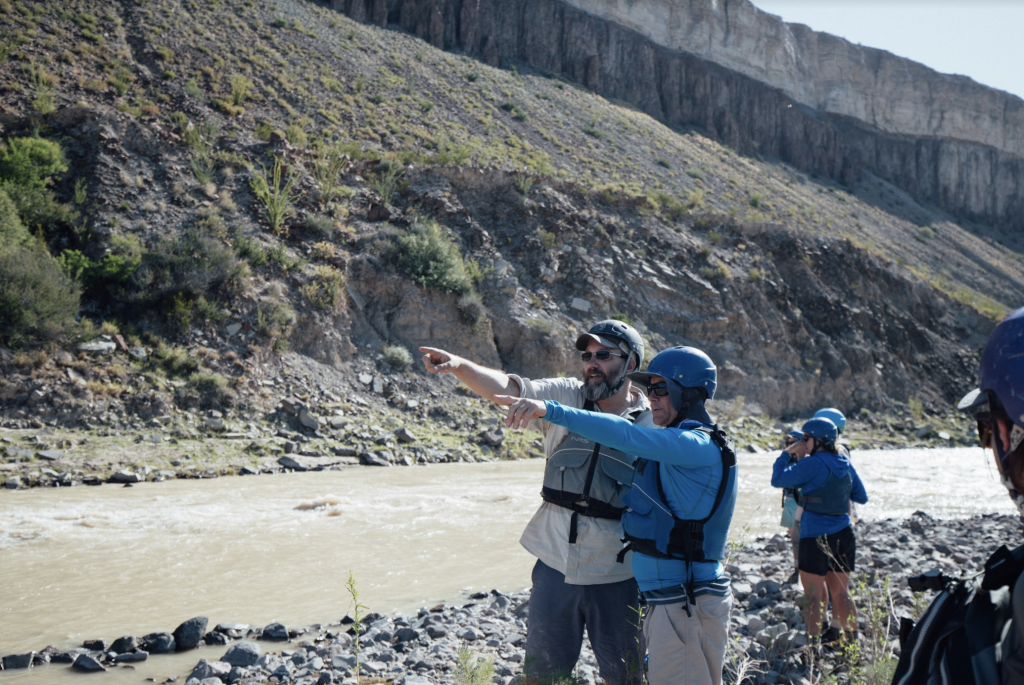
Photo by Rachael Pace
Elated in the wash-out of Rock Slide rapid, we gathered on a grassy bank. In honor of our expedition on the river, we were given the challenge to rewrite a Roosevelt quote on daring greatly. Below is what our crew, together, created:
It is not the dry spectator who counts; not the paddler who points out how much water the other boat is bailing, or how the cane shot could have been avoided. The credit belongs to the paddler actually riding the seam, whose face is marred by sunburn, thorns and dust buggers, who paddles hard, who gets stuck, who hits rock after rock, because there is no effort without running aground and taking on water; but who actually does try to run the rapid, who gleefully screams in terror, never lets go of their paddle; who puts on wet shoes in the dark before dawn for a worthy cause; who at best knows the triumph of a clean line and catching the eddy, and who at worst, if they flip, at least flips while daring greatly, so that their place will always be with all the mud-smeared paddlers who have traveled the river.
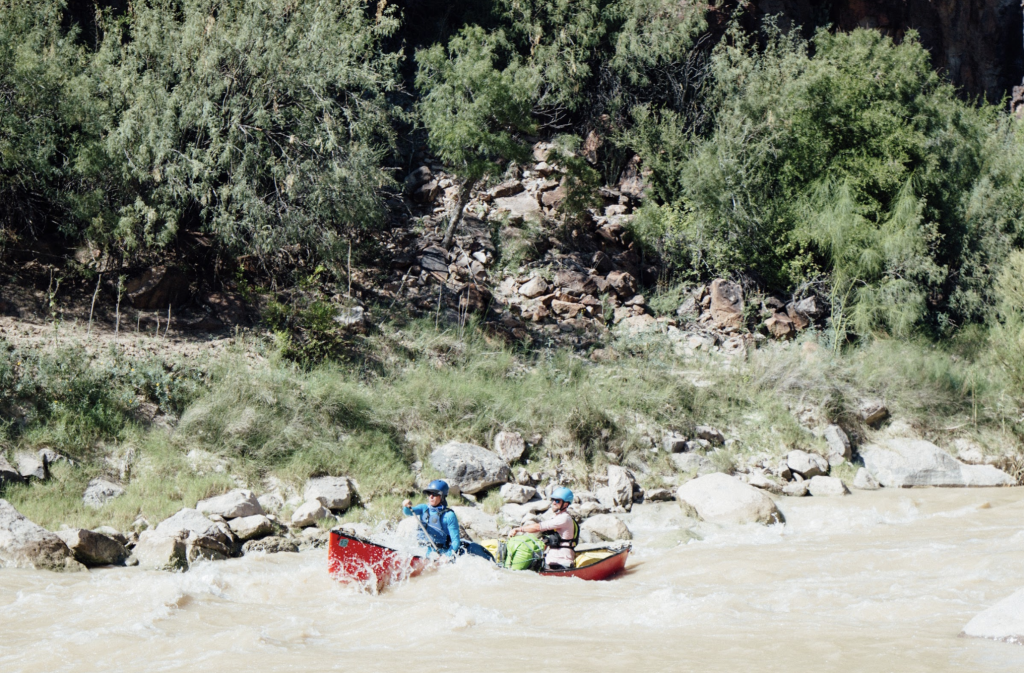
Photo by Rachael Pace
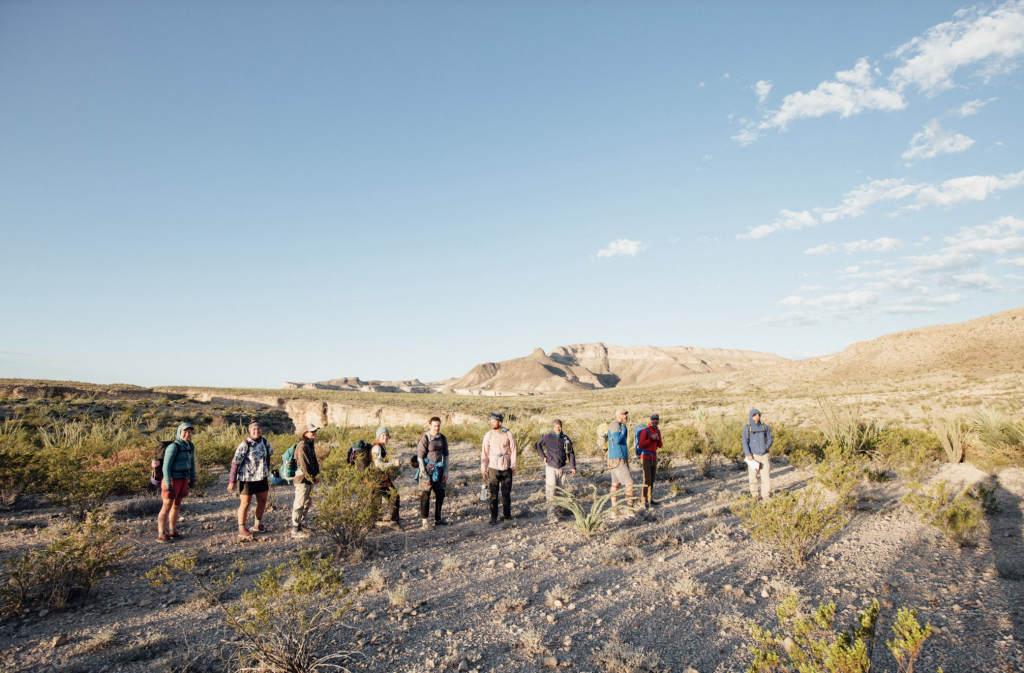
Photo by Rachael Pace
Plan your expedition in Big Bend, Texas. You’ll never forget it.
About the Author
Nora Spicer has instructed backpacking and canoeing courses at the Hurricane Island Outward Bound School for five years. She has an MA in Environmental History from Harvard University and aims to bridge wilderness living and academic study through outdoor education. She is currently developing curriculum for an expedition-based semester program traversing US-Mexico borders by human-powered travel, and is traveling for research on Borderlands education.




